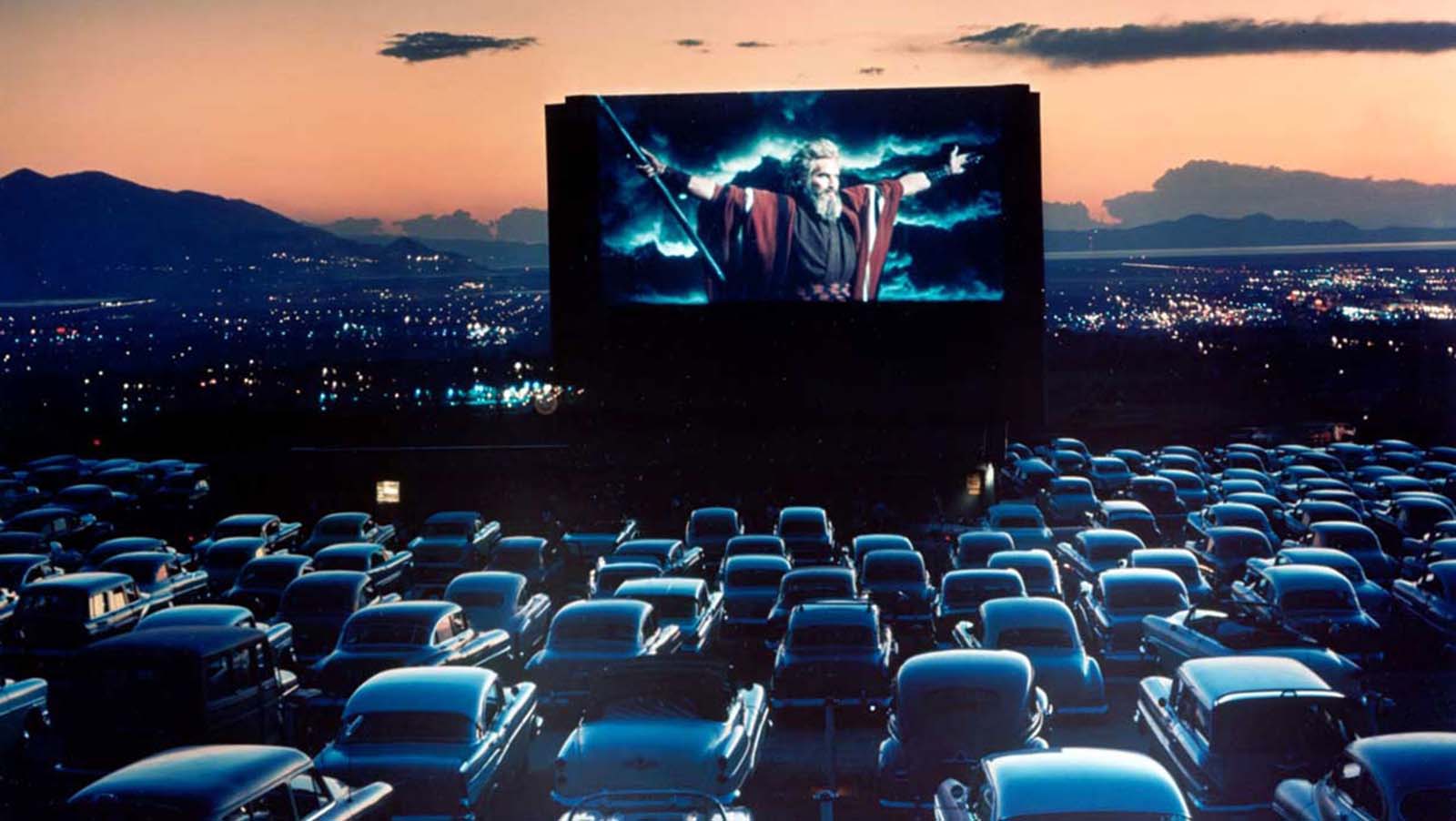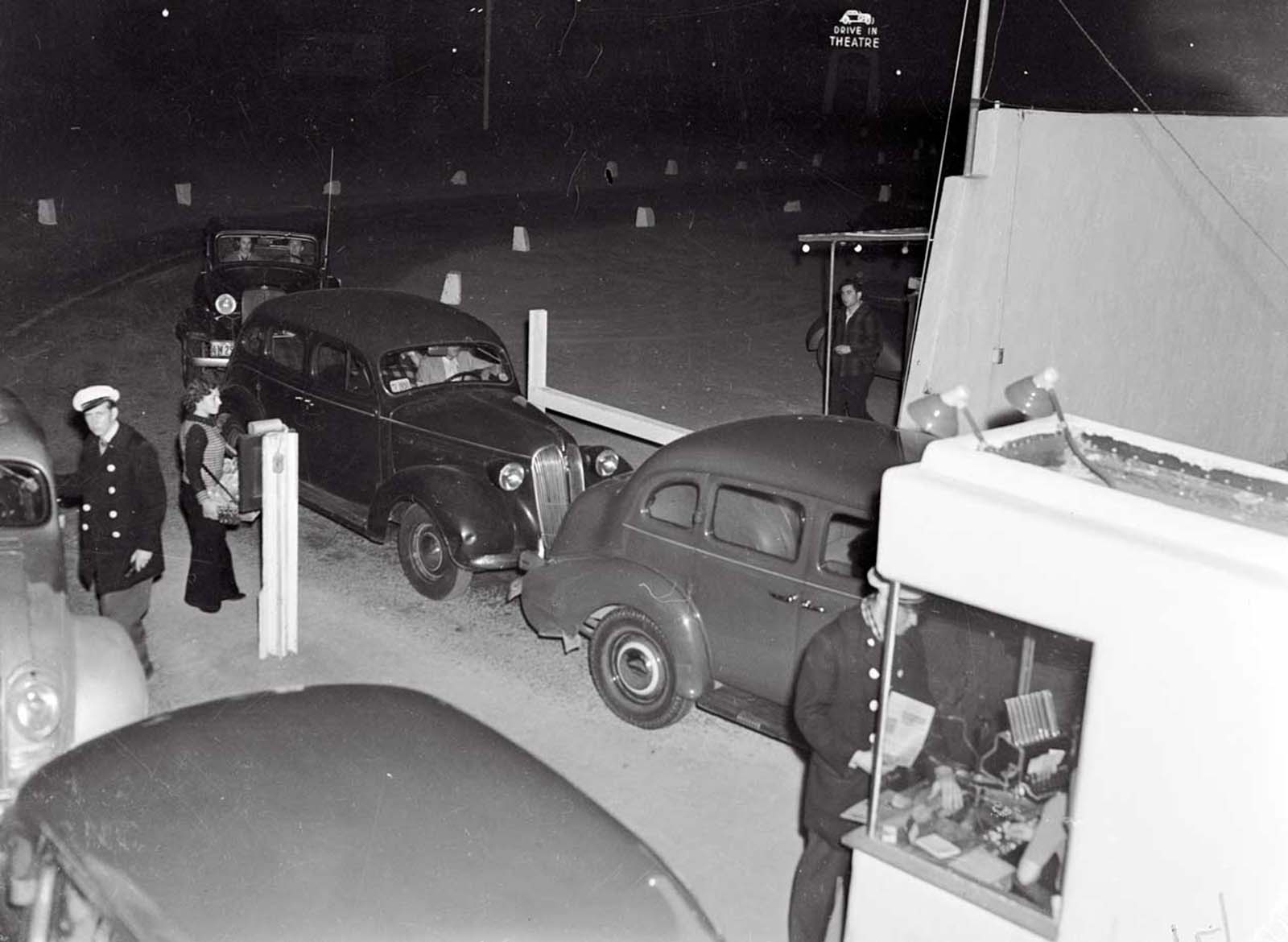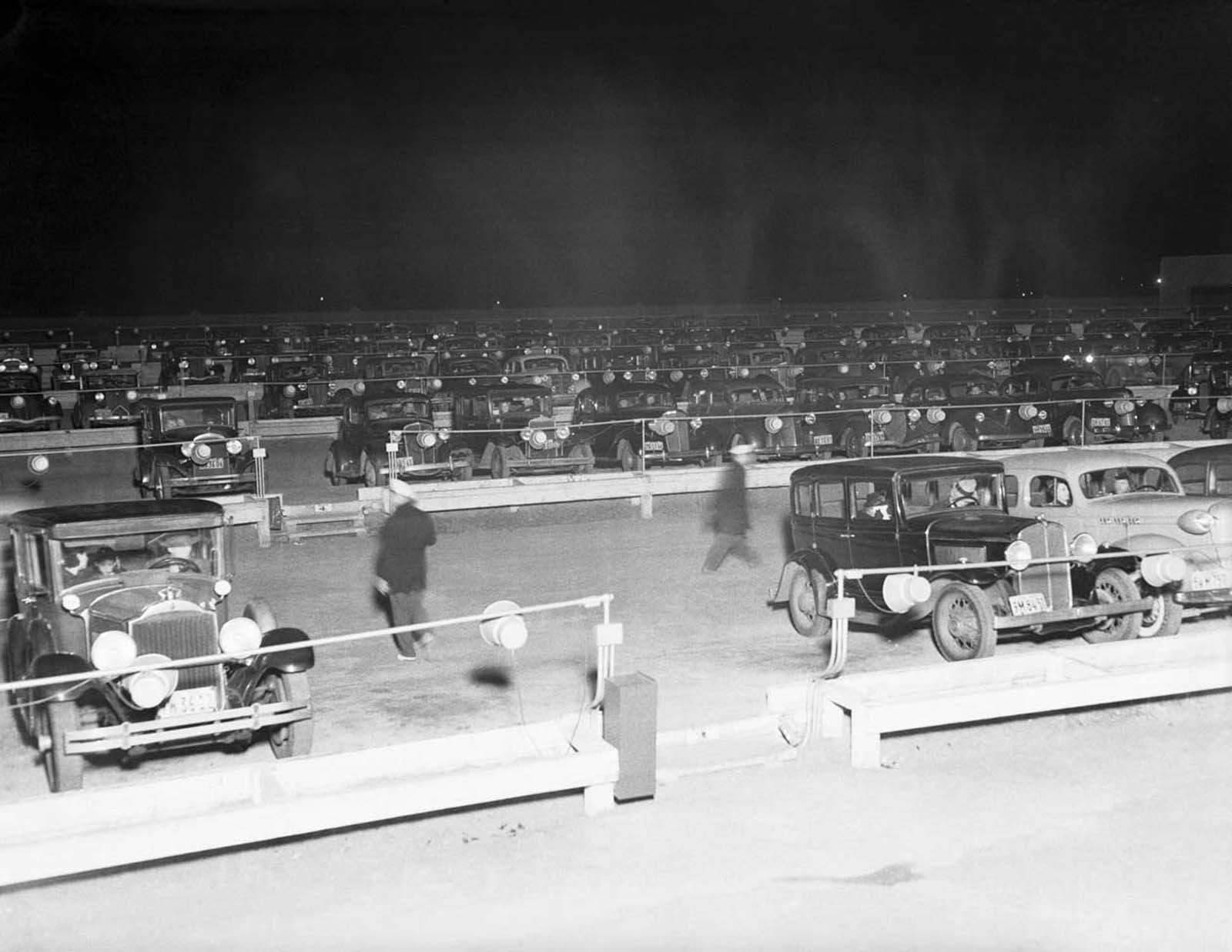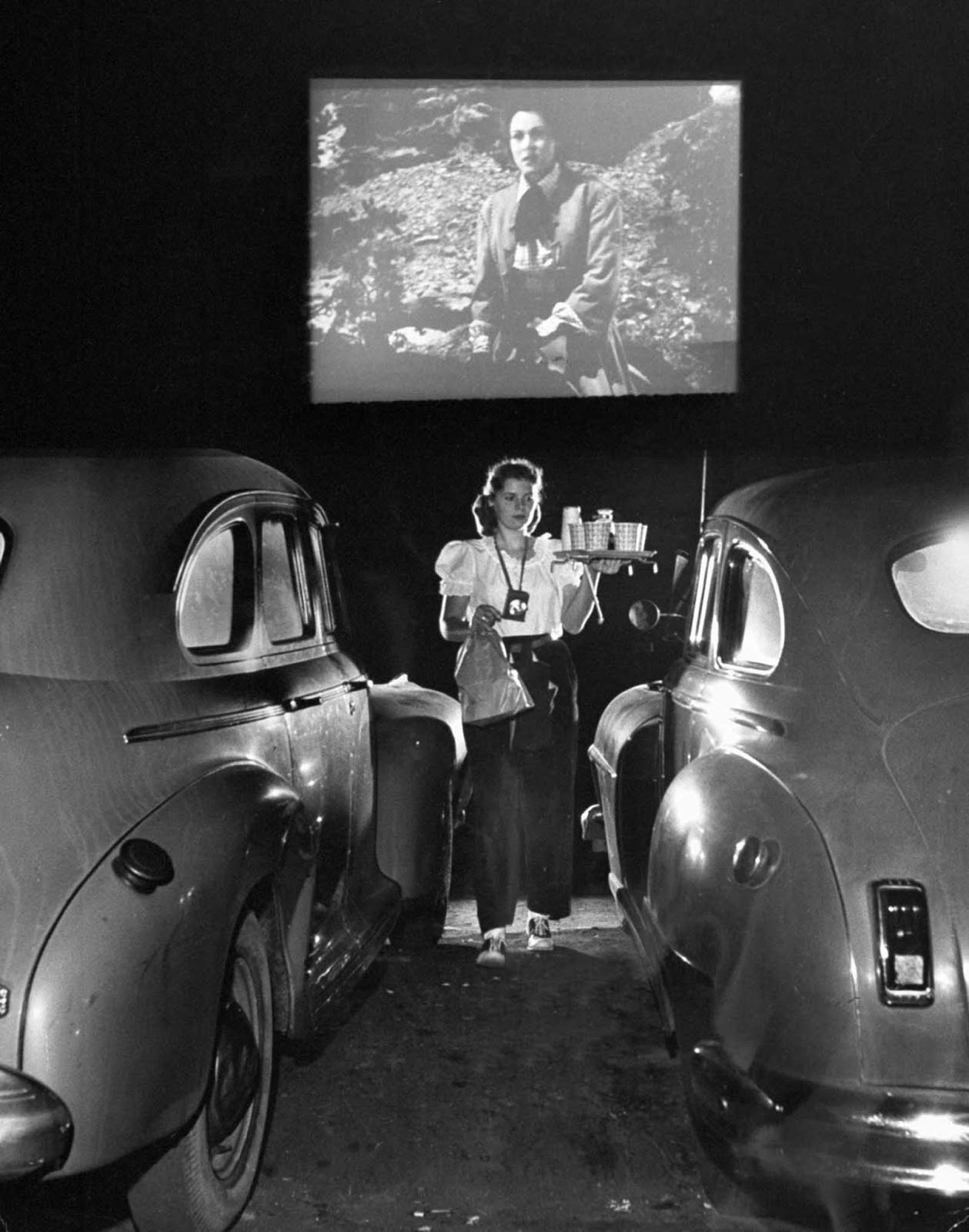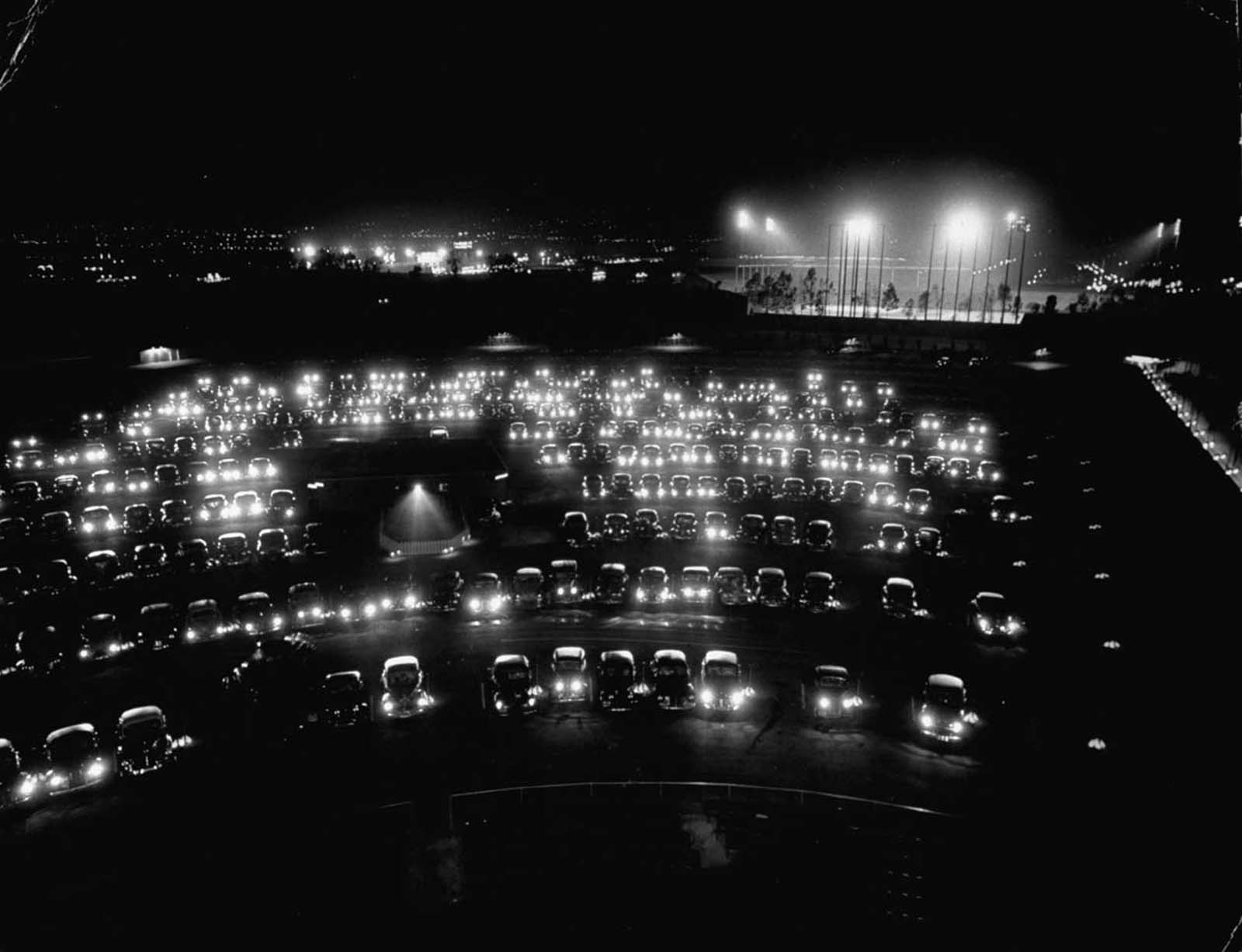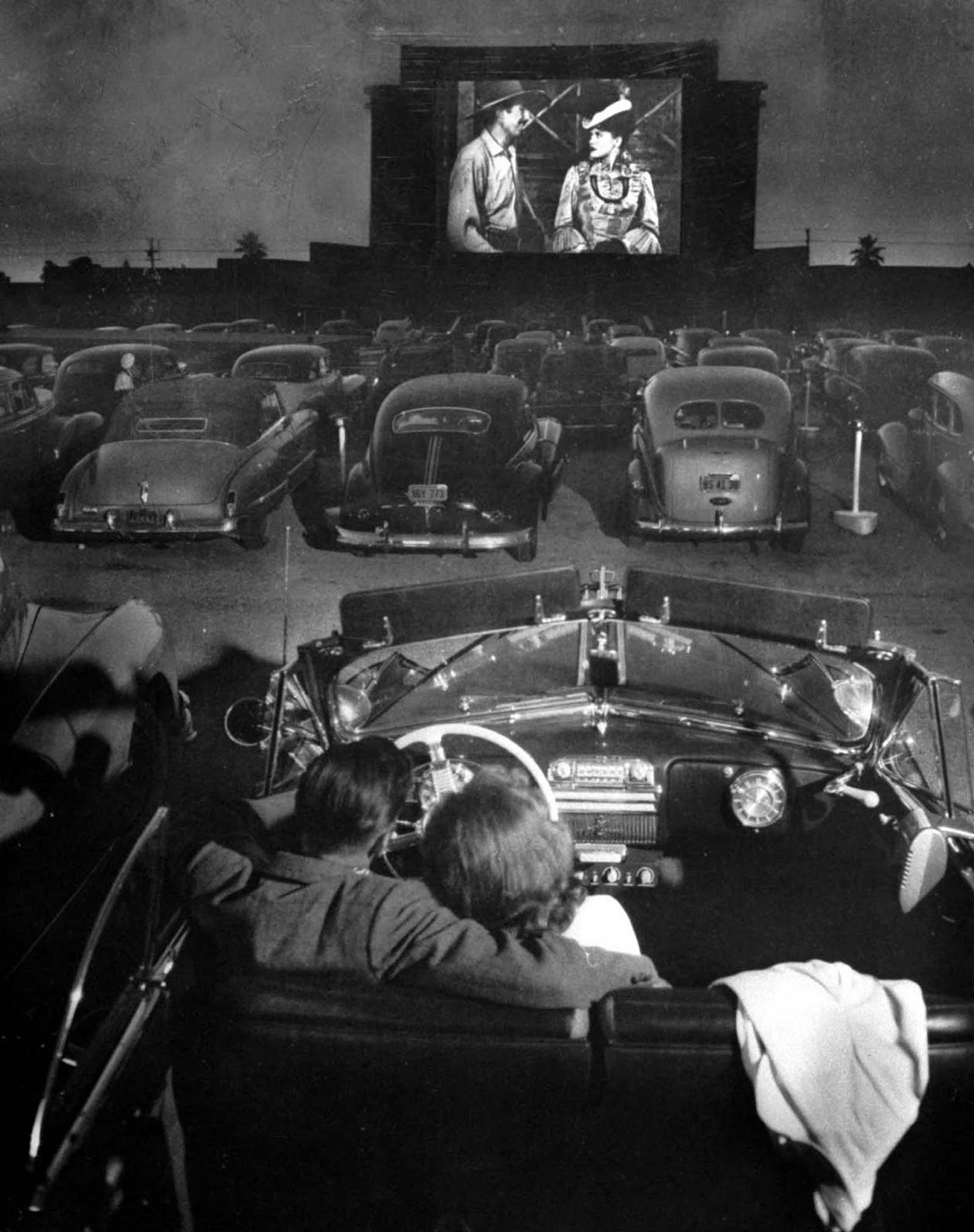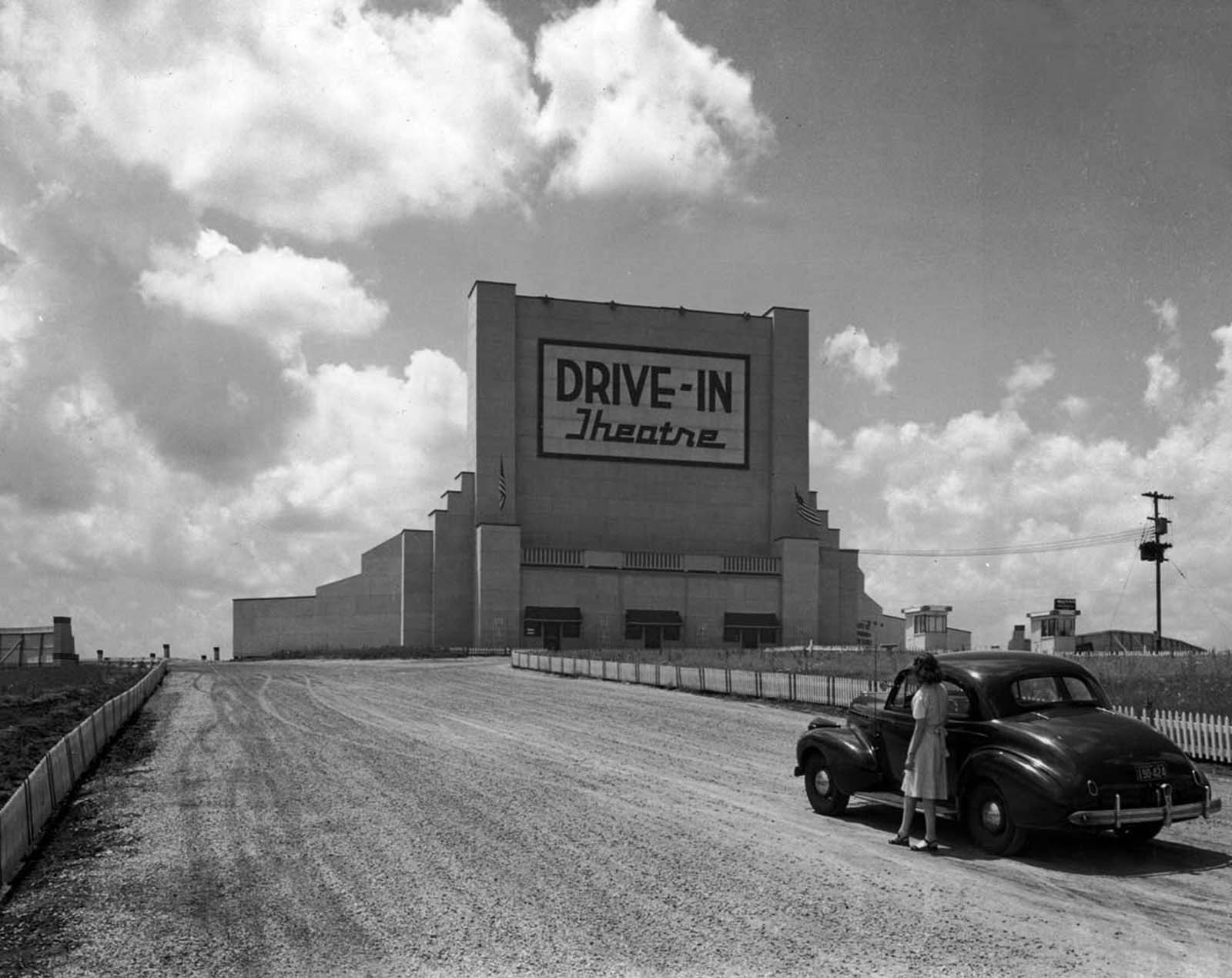The success of Hollingshead’s drive-in caused more and more drive-ins to appear in every state in the country and spread internationally as well. Drive-ins gained immense popularity 20 years later during the 1950s and ‘60s with the Baby Boomer generation. There were over 4,000 drive-ins throughout the U.S. and most were located in rural areas. They maintained popularity as both a space for families to spend time with each other as well as an affordable date night option. Drive-ins were not without challenges: the sound broadcast from the screen reached viewers in the back with an annoying time delay, out of sync with what was happening in the film. This was addressed first by more speakers, then by clip-on car speakers, and ultimately by broadcasting the soundtrack direct to car radios. In addition, revenue was limited by the need to show films only after dark. Despite experiments with massive tents, this problem was never solved. Yet for the patrons, the one huge plus of the drive-in was the privacy afforded by the car. As well as taking away the need to ask children to be quiet, it also offered the ideal environment for a date, with the seductive combination of entertainment, darkness and privacy, all in a confined space. But ultimately drive-ins would pay the price for this environment, securing a reputation as places of ill-repute. To make up for lost revenue, drive-ins began losing their family-friendly atmosphere by showing exploitation films like slasher horrors as well as adult content. The development of the VCR made it more appealing to stay at home and watch movies without paying for a movie at the drive-in. Slowly, drive-ins began to lose their appeal. In order to have an effective drive-in, it had to be on at least 15 acres of land. Economically speaking, it became more practical for owners to close down their drive-ins in order to sell their land to developers to build malls or multi-building complexes. Even though drive-ins are not nearly as popular as they used to be (with some arguing that they will be obsolete within the next decade), there are still drive-ins in business throughout the United States. No matter the fate of America’s drive-ins, they will always be nostalgic and cultural icons. (Photo credit: The Life Picture Collection / Library of Congress). Notify me of new posts by email.
Δ Subscribe
